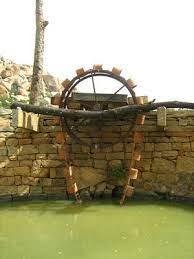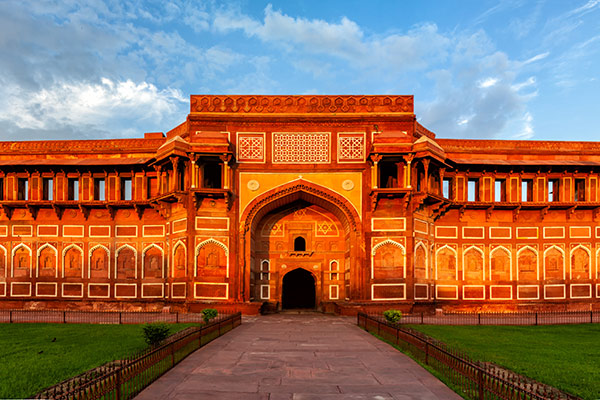Written By: Priyanka Hattiangadi
In the current times, sustainable use of energy is one of the challenges the world population faces today. Natural resources, particularly of energy, are depleting and resources seem inadequate to fulfill the needs of humans in the future. Global warming as well as depletion of fossil fuels poses a dual crisis for sustainability. The building sector, which is a major consumer of energy, requires a critical examination of this aspect.
My awareness about passive cooling techniques increased tremendously after my study tour of Agra Fort organised by the History Department of my college in 1996. I am just writing what I learnt about passive cooling techniques there.
The technique used for cooling, heating, and the ventilation of buildings was more harmonious with nature. The use of locally available resources for the design of historical buildings was quite energy-efficient. Passive cooling present in historical buildings provides a source of inspiration for the cause of sustainable development in our contemporary world.
Agra Fort is located on the banks of river Yamuna and was both a military base and a royal residence of the Mughal dynasty until 1638. The Fort is currently a UNESCO World Heritage site. It is spread across 94 acres of land and had as many as 5,000 buildings.
It is surrounded by a moat from three sides which had multiple uses ranging from being the first line of defence to become a wastewater treatment pond during the Mughal period. Used water from various Fort complexes was collected here and it in turn aided in recharging the groundwater.

Step well or Baoli in Agra Fort: Source http://indiatourism.ws/uttar_pradesh/agra/agra_fort/101.php
The water was drawn from the river Yamuna through the rahant system or Persian Wheel into extensive water channels of Agra Fort. Water channels of the Fort consisted of Baoli, moat, nalis and water tanks. Planning was done keeping in mind rainwater harvesting and conservation. These water channels were then used for maintaining geometrical gardens with fountains which were not only a treat to one’s eyes rather aided evapotranspiration process thereby exacerbating the cooling effect around the Fort.

Within the buildings such as Hawa Mahal, water from step-well was led into the gap between two walls to keep the Mahal cool. It is an architectural marvel since the constant flow of water did not either corrode the walls or led to ceiling dampness. Agra Fort also had an effective rainwater collection system comprising of small drain inlets at various places such as courtyards, gardens etc. These inlets were then connected to water tanks and step-wells where rainwater was collected and used effectively for passive cooling purposes.
The Mughals also introduced the concept of layered spaces such as verandah, courtyard etc. Verandah in Mughal architecture helped to prevent direct exposure of the building’s interior to direct sunlight in the summer season. Khus-khus mats sprinkled with water or bamboo screens were placed in these verandahs for increasing cooling. Courtyards or open spaces within the centre of building like in Rang Mahal was the focal point for various cultural events. Water channels and vegetation in the courtyard helped further to regulate the temperature within these buildings.
Apart from this, they used various shading devices in building complexes to ensure passive cooling. The sunshades such as inclined Chajjas and the use of Jaalis helped in reducing direct exposure to gruelling sun heat in the Mughal structures. Small windows at a high sill level facilitated the stack effect[i]. The walls of the building blocks were another feature that increased cooling. Walls were thick and were made up of bricks covered with sandstone and in mud mortar. Since walls were thick, they were bad thermal conductors hence this helped in keeping the interior cool during summers while it was warm in winter.
These techniques could be used effectively even today to
fight climate change by encouraging water reuse, rainwater harvesting
techniques and architectural techniques such as knowledge about the path of the
sun, use of sunlight, evapotranspiration, shading of walls and doors, layered
spaces and use of construction material like sandstone, marble and mud while
planning cities.
In
this article, I have tried to examine passive cooling techniques and locally
available resources which were used in the Mughal buildings of North India. The
design element of the buildings was aligned with respect to their suitability
to climate. For the present era as well as the future world, there is a need to
explore the design of energy-efficient buildings for sustainable development.
[i] Stack effect refers to movement of air into or outside of building, chimney or container caused by thermal difference.
- How do you avoid environmental pollution? - July 19, 2023
- Learn how to grow a mango tree from seeds - June 29, 2023
- Commercial Electric Vehicles platform Turno raises $13.8M as it scales across India and builds proprietary battery technology - February 9, 2023
- HelpAge India rolls out ‘Project Surakshit’ to train 50,000 elders in Digital Safety - February 8, 2023
- A trip of faith and sustainability: An enriching escape to Dongaon, Maharashtra, India - January 9, 2023
- A Sustainable Kidswear Wardrobe for the Little Ones - July 25, 2022
- 10 Sustainable and Ecofriendly Apparel Brands from India That Are Blazing the Trail - July 23, 2022
- Kajal can harm your baby’s eyes? - July 20, 2022
- Greenubuntu organizes plantation drive in Paras Hospital, Patna - July 11, 2022
- Only electric cars to be sold in India by 2030: Go Green - February 28, 2022

